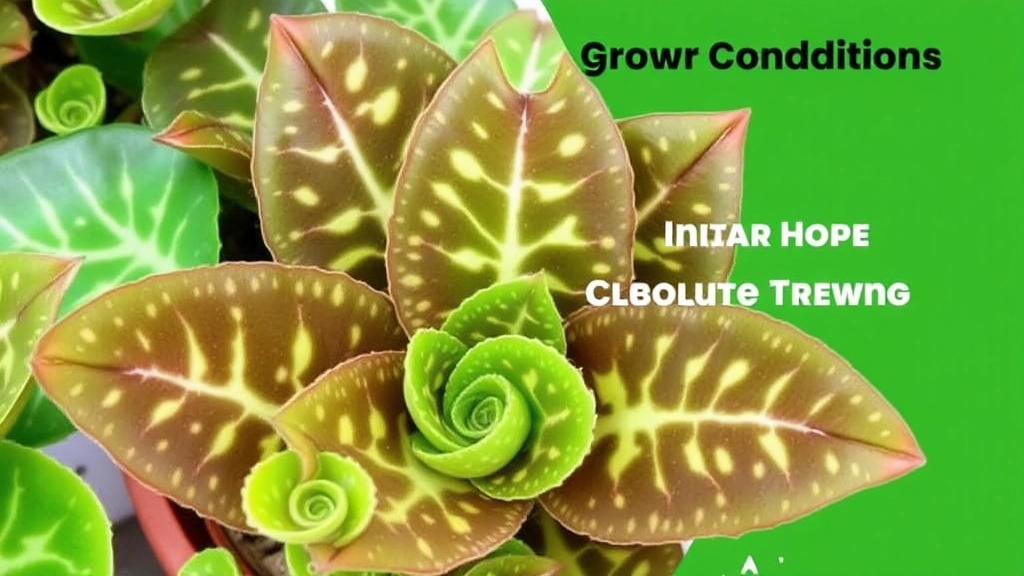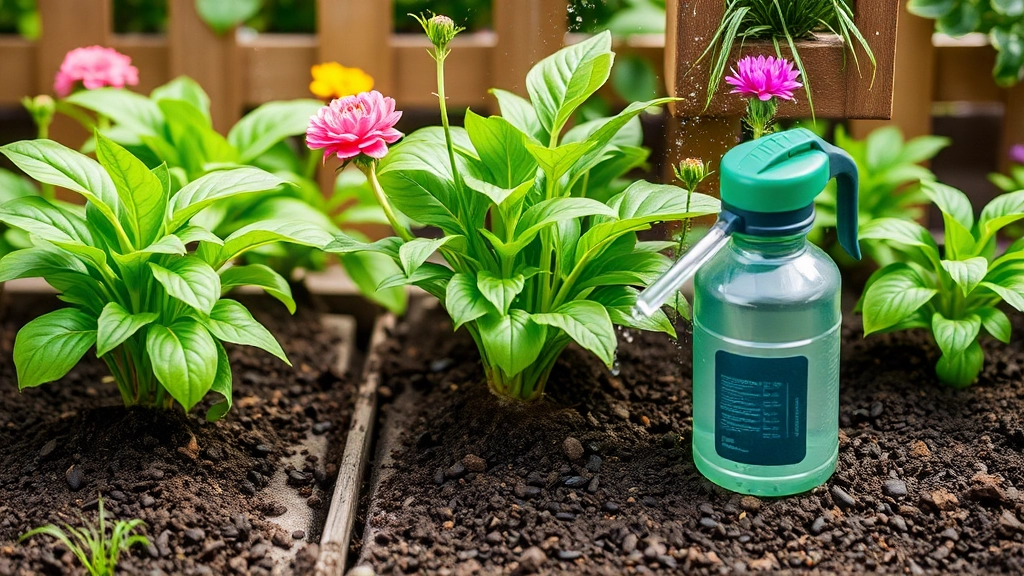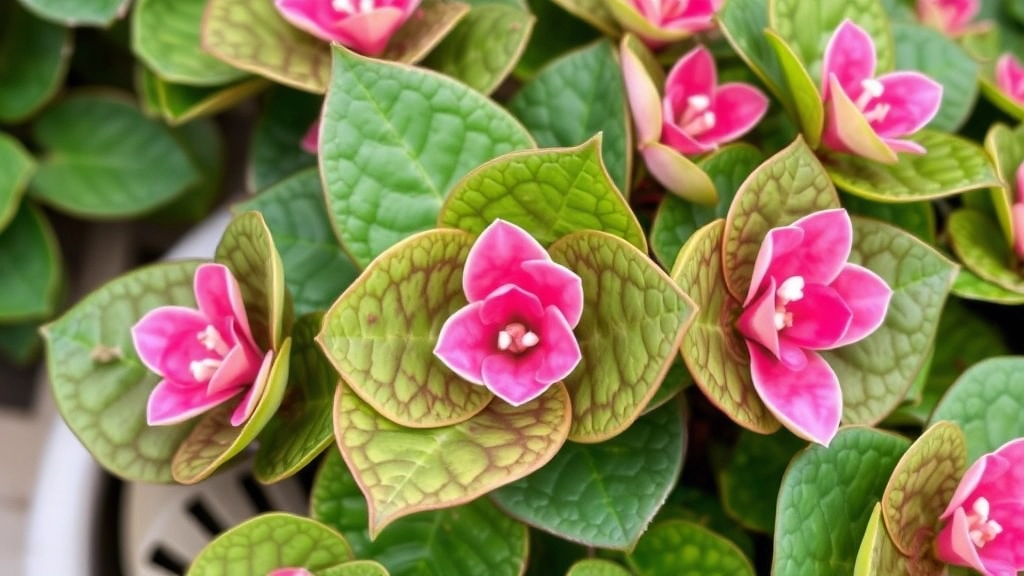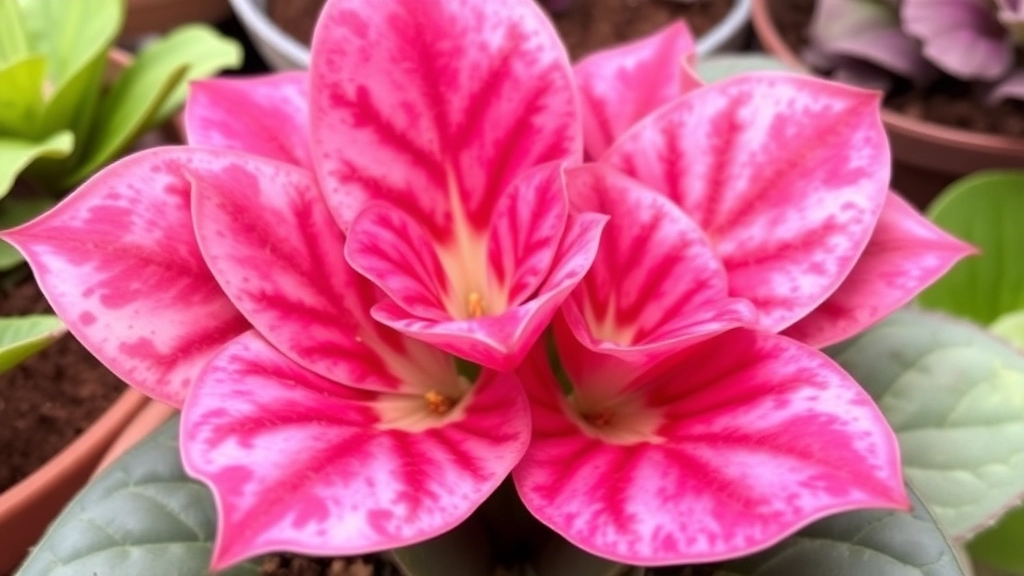Growing Elephant Ear Kalanchoe Beharensis
Looking to grow a stunning Elephant Ear Kalanchoe Beharensis? You’ve come to the right place. This unique succulent, with its large, velvety leaves, can be a fantastic addition to your indoor or outdoor garden. I’ll guide you through the essentials to ensure your plant thrives.
Light and Soil Requirements
First, let’s talk about light and soil. The Elephant Ear Kalanchoe Beharensis loves bright, indirect sunlight and well-draining soil. Overwatering is a big no-no, so let the soil dry out between waterings. Keep it simple, and your plant will reward you with its striking appearance.
Are you looking to add a unique touch to your indoor or outdoor garden?
The Elephant Ear Kalanchoe Beharensis is a standout choice.
This striking succulent, known for its large, ear-shaped leaves, is a member of the Kalanchoe family.
Its thick, fleshy foliage not only offers visual appeal but also serves as a water reservoir, making it a resilient option for various environments.
Key Features
– **Leaves**: The leaves can grow up to 30 cm long and are a vibrant green, often displaying a silvery sheen.
– **Height**: This plant can reach heights of up to 1.5 meters, making it a dramatic statement piece.
– **Flowers**: While primarily grown for its foliage, it can produce small, tubular flowers, usually in clusters.
Growing Popularity
The Elephant Ear Kalanchoe Beharensis has gained popularity among gardeners and plant enthusiasts for its unique aesthetic and low maintenance requirements.
It’s an excellent choice for both novice and experienced gardeners alike. For more information on the different varieties and care characteristics, check out our [Kalanchoe Beharensis Varieties Care Guide](https://planthq.org/exploring-kalanchoe-beharensis-varieties-care-characteristics/). Additionally, if you’re interested in other unique Kalanchoe plants, you might want to explore the [Kalanchoe Mother of Millions Care Guide](https://planthq.org/kalanchoe-mother-of-millions-care-guide-essential-tips/).
Ideal Growing Conditions for Elephant Ear Kalanchoe Beharensis

Are you wondering what your Elephant Ear Kalanchoe Beharensis needs to thrive?
Let’s dive into the ideal growing conditions that will help your plant flourish.
Light
First off, this beauty loves bright, indirect sunlight.
- Optimal Placement: A spot near a south or west-facing window works wonders.
- Avoid Direct Sun: Too much direct sunlight can scorch those lovely leaves.
Temperature
Kalanchoe Beharensis enjoys a warm environment.
- Ideal Range: Keep temperatures between 15°C to 25°C (59°F to 77°F).
- Watch Out for Cold: Anything below 10°C (50°F) can stress it out.
Humidity
While this plant is pretty adaptable, it does prefer moderate humidity.
- Ideal Levels: A humidity level of around 40-60% is best.
- Dry Air? If your home is dry, consider using a pebble tray or a humidifier.
Soil
The right soil mix is crucial for your Kalanchoe’s health.
- Well-Draining Soil: A cactus or succulent mix is perfect.
- DIY Mix: You can also create your own by mixing potting soil with sand or perlite.
Potting
Choosing the right pot can make a big difference.
- Drainage is Key: Ensure your pot has drainage holes to prevent root rot.
- Size Matters: A pot that’s too big can hold excess moisture, so opt for one that’s just a tad larger than the root ball.
Planting and Propagation
When considering how to successfully plant and propagate your Elephant Ear Kalanchoe Beharensis, you may wonder about the best methods to ensure robust growth. This stage is crucial for establishing a healthy plant that can thrive in your home or garden.
Planting
- Choosing the Right Container:
- Select a pot with drainage holes to prevent waterlogging.
- Opt for a container that is slightly larger than the root ball.
- Soil Requirements:
- Use a well-draining soil mix, ideally a cactus or succulent blend.
- You can also mix regular potting soil with sand or perlite for enhanced drainage.
- Location:
- Place the pot in a location that receives bright, indirect sunlight.
- Avoid direct afternoon sun, which can scorch the leaves.
Propagation
Propagation is a rewarding way to expand your collection. Here are a couple of effective methods:
- Leaf Cuttings:
- Select a healthy leaf and cut it off at the base.
- Allow the cut end to dry for a few days to form a callus.
- Place the leaf in well-draining soil and water sparingly until roots develop.
- Offsets:
- Look for offsets or pups that grow at the base of the plant.
- Gently separate these from the parent plant, ensuring some roots are attached.
- Replant them in their own containers with the same soil mix.
By following these planting and propagation tips, you can cultivate a thriving Elephant Ear Kalanchoe Beharensis that brings a touch of exotic beauty to your space. For more detailed guidance, you might find our Kalanchoe Beharensis Variegata Care Guide helpful. Additionally, if you’re interested in expanding your collection, consider learning about the Propagation of Kalanchoe Tomentosa.
Watering and Fertilization Needs

When it comes to caring for your Elephant Ear Kalanchoe Beharensis, understanding its watering and fertilization needs is crucial. Many plant enthusiasts often worry about overwatering, which can lead to root rot, or under-watering, which can stunt growth.
Watering Guidelines
- Frequency: Water your Kalanchoe Beharensis only when the top inch of soil feels dry. This typically means watering every 2-3 weeks, depending on the humidity and temperature.
- Method: Use the soak-and-dry method. Water thoroughly until it drains from the bottom, then allow the soil to dry out completely before the next watering.
- Signs of Overwatering: Yellowing leaves or a mushy stem are red flags that you may be giving it too much water.
- Signs of Underwatering: If the leaves start to wrinkle or feel crispy, it’s time to give your plant a drink.
Fertilization Tips
- Type of Fertilizer: Use a balanced, water-soluble fertilizer diluted to half strength. A formula with a ratio of 10-10-10 works well.
- Frequency: Fertilize every 4-6 weeks during the growing season (spring and summer). Reduce feeding in autumn and winter when the plant is dormant.
- Application: Apply fertilizer to moist soil to prevent root burn.
Common Pests and Diseases
As we delve deeper into caring for your Elephant Ear Kalanchoe Beharensis, it’s crucial to address a common concern: pests and diseases.
What pests should you watch for?
- Mealybugs:
- These small, white, cotton-like insects often hide in leaf axils and stem joints.
- They can weaken your plant by sucking its sap.
- Aphids:
- Tiny and green, these pests can quickly multiply.
- They not only sap strength from your Kalanchoe but can also transmit viruses.
- Spider Mites:
- More common in dry conditions, these tiny arachnids create webbing on the undersides of leaves.
- They can cause leaf discolouration and drop.
- Scale Insects:
- Look for small, brown bumps on stems and leaves.
- These pests also feed on sap and can lead to plant stress.
Potential diseases to be aware of:
- Root Rot:
- Overwatering can lead to this fungal disease.
- Signs include wilting and yellowing leaves.
- Powdery Mildew:
- A white, powdery fungus on leaves, often due to high humidity.
- It can hinder photosynthesis and overall plant health.
- Leaf Spot:
- Characterised by dark spots on leaves, often a result of fungal infections.
- This can lead to leaf drop if not managed.
Preventative Measures:
- Regular Inspections:
- Check your Kalanchoe weekly for any signs of pests or disease.
- Proper Watering:
- Ensure your plant has well-draining soil and avoid overwatering to prevent root rot.
- Air Circulation:
- Keep your plant in a well-ventilated area to reduce humidity and deter powdery mildew.
- Neem Oil:
- A natural pesticide that can help manage pest infestations effectively.
Seasonal Care Tips for Elephant Ear Kalanchoe Beharensis

So, you’ve got your Elephant Ear Kalanchoe Beharensis thriving, but how do you keep it looking fabulous all year round?
Spring Awakening
Spring is the time to give your plant a little extra love.
- Repotting: If your Kalanchoe has outgrown its pot, now’s the time to repot it.
- Fertilization: Start feeding it with a balanced fertiliser every few weeks to kickstart its growth.
- Sunshine: Ensure it’s getting plenty of bright, indirect sunlight.
Summer Vibes
Summer can be a bit of a mixed bag for your Kalanchoe.
- Watering: Increase your watering frequency, but don’t drown it! Let the top inch of soil dry out between waterings.
- Humidity: If it’s particularly hot, consider misting the leaves to keep them happy.
- Pest Check: Keep an eye out for pests like aphids or mealybugs. A gentle spray of water can help keep them at bay.
Autumn Transition
As the days get shorter, your Kalanchoe needs a bit of a shift.
- Reduce Watering: Cut back on watering as the plant slows down.
- Light Adjustment: Move it to a spot where it can still soak up some light, but avoid harsh direct sun.
Winter Care
Winter can be a tough time for your plant, but fear not!
- Temperature Control: Keep it in a warm spot, ideally above 10°C.
- Minimal Watering: Water sparingly; your plant is in a dormant phase.
- Dusting: Wipe down the leaves to keep them clean and happy.
VII. Pruning and Maintenance
When it comes to maintaining the health and beauty of your Elephant Ear Kalanchoe Beharensis, pruning plays a crucial role. Many plant enthusiasts often wonder how to keep their Kalanchoe thriving and looking its best.
Why Prune?
Pruning is essential for several reasons:
- Promotes Healthy Growth: Regular pruning encourages new growth and helps the plant maintain its shape.
- Removes Dead Leaves: This prevents the spread of diseases and pests.
- Enhances Aesthetics: A well-pruned plant looks neater and more appealing.
When to Prune?
The ideal time to prune your Kalanchoe Beharensis is during the growing season, typically in spring or early summer. This timing allows the plant to recover quickly and encourages fresh growth.
Pruning Steps:
- Gather Your Tools: Use clean, sharp scissors or pruning shears to avoid damaging the plant.
- Identify Areas to Prune: Look for:
- Dead or yellowing leaves
- Overly long stems
- Any signs of disease
- Make Clean Cuts: Trim leaves and stems just above a node or leaf joint to encourage new growth.
- Dispose of Cuttings Properly: This prevents any potential pests or diseases from spreading.
Maintenance Tips:
- Regular Inspection: Check your plant weekly for any signs of pests or diseases.
- Dust the Leaves: Wipe the leaves gently with a damp cloth to keep them clean and maximise photosynthesis.
- Adjust Lighting: Ensure your Kalanchoe is receiving adequate light, as this can affect its overall health.
Incorporating these pruning and maintenance practices will not only keep your Kalanchoe Beharensis healthy but also enhance its beauty. For more detailed care tips, you can visit our Elephant Ear Kalanchoe Beharensis Care Guide and learn about pruning leggy Kalanchoe to keep your plant in top shape.
Benefits of Growing Kalanchoe Beharensis
If you’re wondering why you should consider bringing Kalanchoe Beharensis into your home or garden, let me share some real perks that come with this stunning plant.
First off, Kalanchoe Beharensis, also known as the Elephant Ear plant, is more than just a pretty face. It’s incredibly low-maintenance, making it perfect for beginners or anyone who might not have a green thumb.
Aesthetic Appeal
- The large, unique leaves add a tropical vibe to any space.
- Its striking appearance makes it a fantastic conversation starter.
Air Purification
Did you know that having plants around can improve air quality? Kalanchoe Beharensis helps filter out toxins, making your environment healthier.
Drought Resistance
- This plant is a succulent, meaning it stores water in its leaves.
- It thrives on neglect, so you won’t have to worry about constant watering.
Versatility
- You can grow it indoors or outdoors, depending on your space.
- It fits well in various decor styles, from modern to bohemian.
Propagation Ease
If you’re keen on sharing the love, propagating Kalanchoe Beharensis is a breeze. Just take a leaf or stem cutting, and you can easily grow new plants to gift or decorate with. For a detailed guide, check out this care and propagation guide.
Therapeutic Benefits
Caring for plants can be therapeutic. The act of nurturing Kalanchoe Beharensis can reduce stress and improve your mood. Plus, watching it grow is genuinely satisfying. Learn more about its health and medicinal benefits.
Cost-Effective
- Low water and fertilization needs mean lower costs in the long run.
- You can propagate easily, saving you money on buying new plants.
FAQs about Elephant Ear Kalanchoe Beharensis
What kind of light does Elephant Ear Kalanchoe Beharensis need?
The Elephant Ear Kalanchoe Beharensis thrives in bright, indirect sunlight. It’s best to place it near a south or west-facing window. Avoid exposing it to direct sunlight as it can scorch the leaves.
What is the ideal temperature range for this plant?
This plant prefers a warm environment with temperatures between 15°C to 25°C (59°F to 77°F). Be cautious of temperatures below 10°C (50°F) as it can stress the plant.
How much humidity does Elephant Ear Kalanchoe Beharensis require?
The plant does well in moderate humidity levels, ideally around 40-60%. If your home has dry air, consider using a pebble tray or a humidifier to maintain the right humidity levels.
What type of soil is best for Elephant Ear Kalanchoe Beharensis?
A well-draining soil mix is crucial. A cactus or succulent mix works perfectly. Alternatively, you can create your own mix by combining potting soil with sand or perlite.
How often should I water my Elephant Ear Kalanchoe Beharensis?
Water your plant only when the top inch of soil feels dry, typically every 2-3 weeks depending on the humidity and temperature. Use the soak-and-dry method to ensure proper watering.
What signs indicate overwatering or underwatering?
Signs of overwatering include yellowing leaves or a mushy stem. Underwatering can cause the leaves to wrinkle or feel crispy.
What type of fertilizer should I use and how often?
Use a balanced, water-soluble fertilizer diluted to half strength, with a ratio of 10-10-10. Fertilize every 4-6 weeks during the growing season (spring and summer) and reduce feeding in autumn and winter.
How should I care for my plant during different seasons?
Spring: Repot if necessary, start fertilizing, and ensure plenty of bright, indirect sunlight.
Summer: Increase watering frequency, mist leaves if hot, and check for pests.
Autumn: Reduce watering and adjust light exposure.
Winter: Keep in a warm spot above 10°C, water sparingly, and dust the leaves.
What should I consider when choosing a pot for my Elephant Ear Kalanchoe Beharensis?
Ensure the pot has drainage holes to prevent root rot. Opt for a pot that’s just slightly larger than the root ball to avoid excess moisture retention.
References
-
Optimal Light Conditions for Kalanchoe Beharensis
-
Best Soil Mixes for Succulents
-
Watering Guidelines for Succulent Plants
